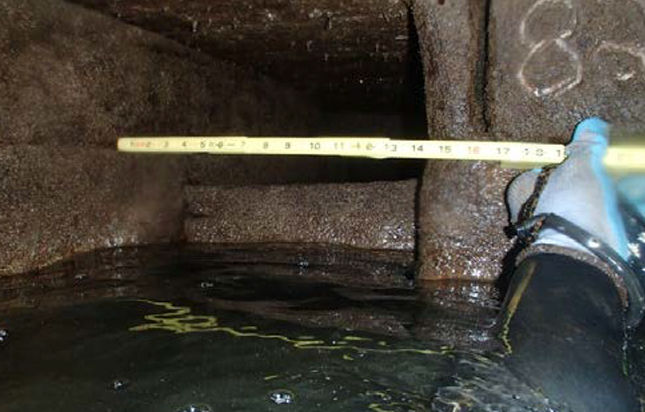
Philadelphia Regional Port Authority
Pier 80 and 82 Hardware Repairs | Pier 82 and 84 Pile Repairs

A History of Excellence
For an economically-vital port like the Port of Philadelphia (PhilaPort), it’s important to regularly inspect, repair, and maintain its facilities and structures. Established over 300 years ago in the earliest days of our country, the port has seen many upgrades and expansions in this time, many of which have been courtesy of S. T. Hudson. For this particular project, the S. T. Hudson team used advanced marine engineering capabilities and the in-house dive inspection team to keep three of PhilaPort's busiest piers in excellent working condition.

Project Goals
Avoiding unexpected repairs is essential for profitability and efficiency. To meet this objective, S. T. Hudson developed a plan to discover potential issues before they become larger problems. This plan helped PhilaPort achieve the following goals:
Keep Piers in Optimum Operating Condition
Time and wear naturally lead to degradation in the piers. With inspections and engineered design for repairs and rehabilitation, S. T. Hudson helps keep the piers in peak operating condition.
Enhance Cargo Loading/Unloading Capabilities
Over the years, the materials used in marine construction have evolved and improved. Upgrading as technology advances helps the port improve their ability to efficiently load/unload cargo.
Key Data Points
45
Draft Depth
1701
Port Organization Est.
2,500
Ships Per Year
Project Details
One of the oldest ports in America, the Port of Philadelphia sees plenty in the way of ship traffic and cargo. Because of this, it is vital that the piers undergo regular inspection, maintenance, and repairs to ensure they remain in top working condition. S. T. Hudson helps the Port of Philadelphia do this.
The Port of Philadelphia has built its legacy as a major center of maritime industrial commerce for over 300 years. Located on the Delaware River in Philadelphia, it is one of the biggest fruit and perishables ports in the U.S. Keeping a regular maintenance and repair schedule is essential for safe and uninterrupted operations. Within the port, there are several marine terminals, each with specialized capabilities. Pier 80 handles newsprint, wood pulp, lumber, coated paper, and other forest products through the Philadelphia Forest Products Center. Pier 82 serves as one of the port's main terminals for perishables due to its modern refrigerated storage and container-handling capabilities. Pier 84 is dedicated exclusively to cocoa beans and other cocoa products. For this project, S. T. Hudson was tasked with inspecting all three to determine what repairs were needed.
The in-house diving team performed their inspection using advanced hydrographic surveying equipment that would help S. T. Hudson generate drawings and put together a comprehensive engineering design report. S. T. Hudson’s history in the maritime community allows the team access to the original drawings and plans when the piers were built, which helps the team provide more accurate recommendations. The team also performed above-water inspections, leading to a plan to deliver hardware repairs for Piers 80 and 82, and pile repairs for Piers 82 and 84. S. T. Hudson oversaw completion of the project, which allowed the port to provide an enhanced experience for cargo ships.
Scope of Services
- Initial inspection utilizing an in-house dive team
- Hydrographic surveying to determine water depth
- Construction drawings and technical specifications
- Final design for all aspects of each pier’s rehabilitation
- Cost estimates, bid documents, and a diver survey team to inspect the contractor’s progress during rehabilitation
- Following each dive inspection, a detailed report of the contractor’s progress with noted deficiencies and updated drawings
- Regular progress meetings throughout the course of the rehabilitation






